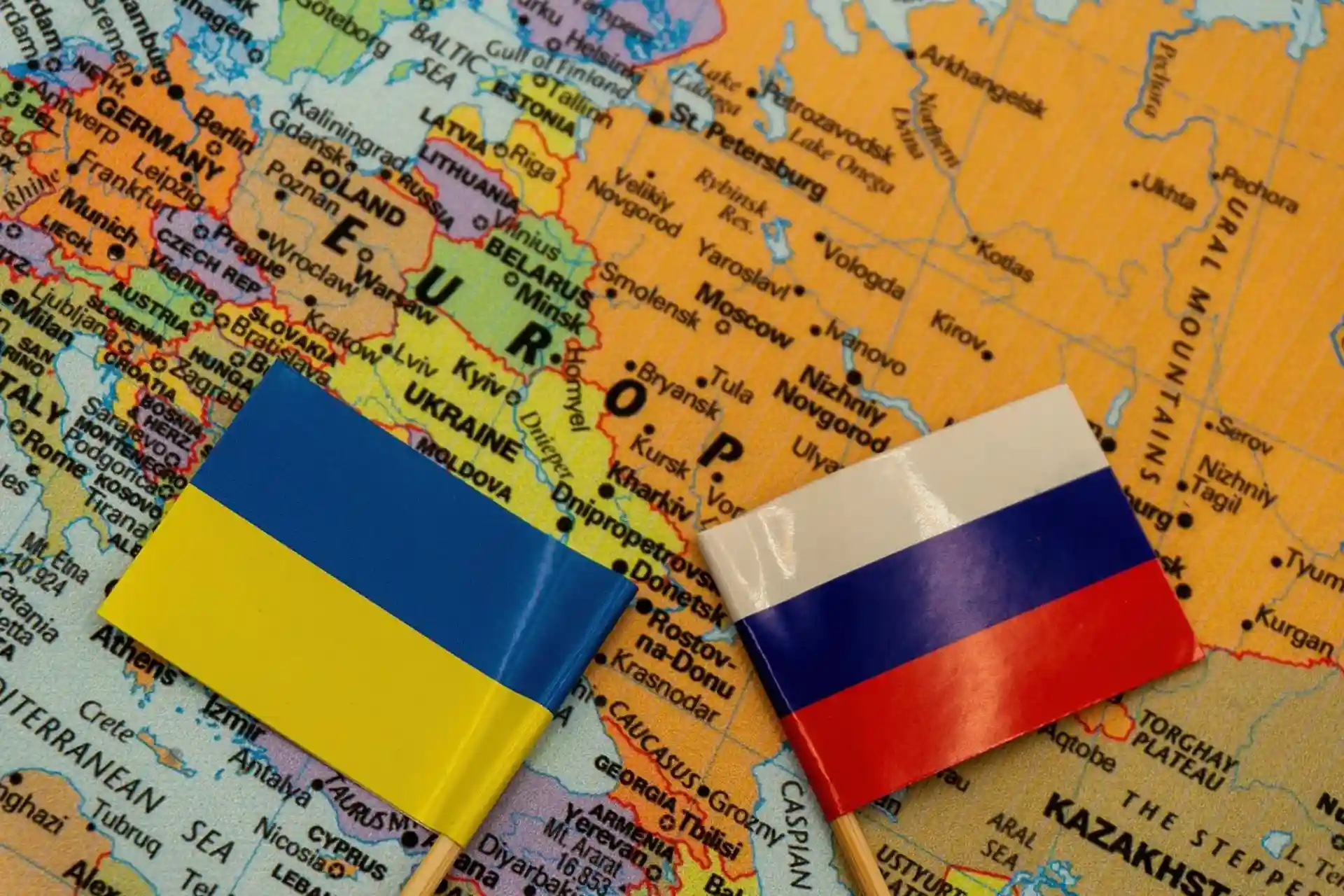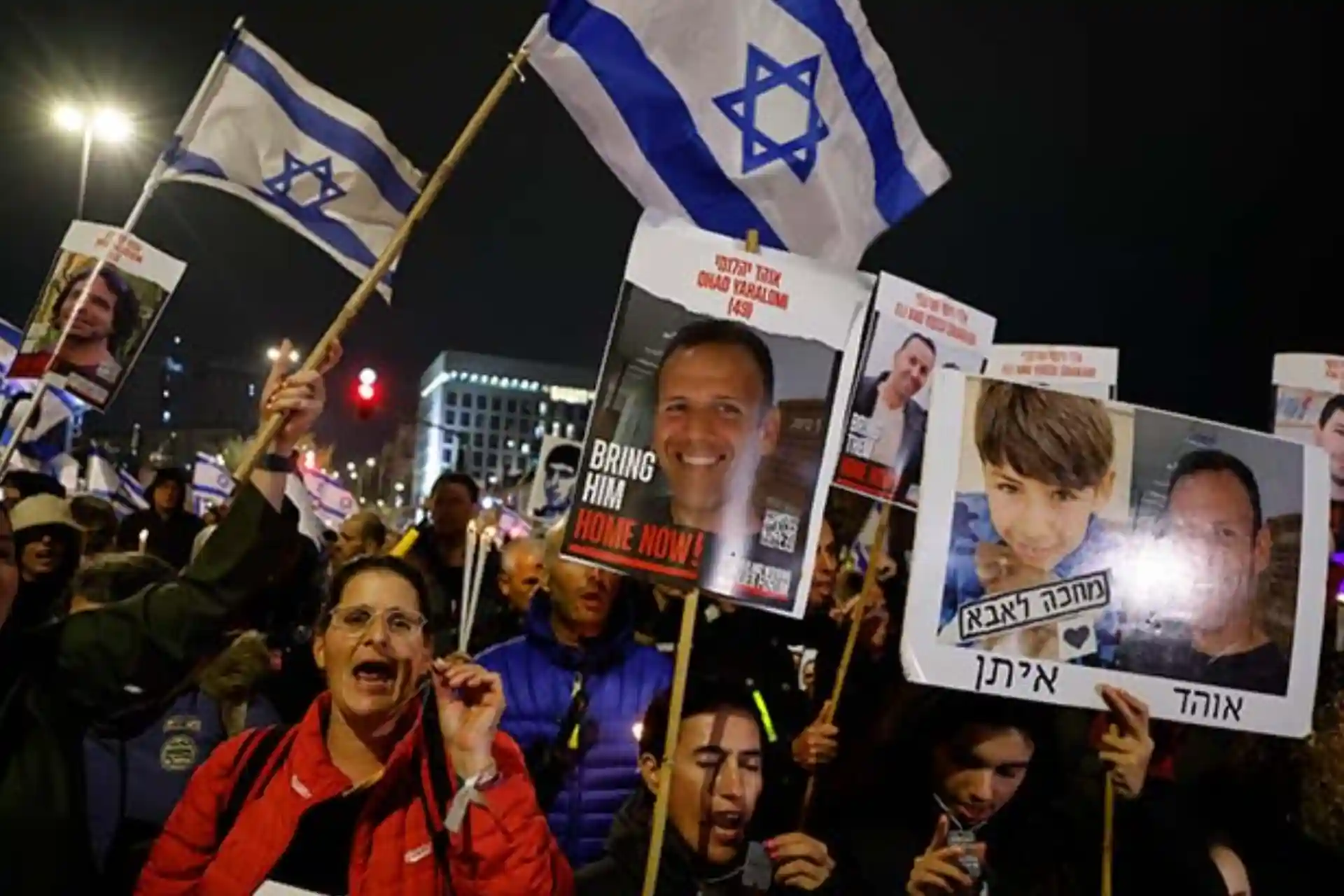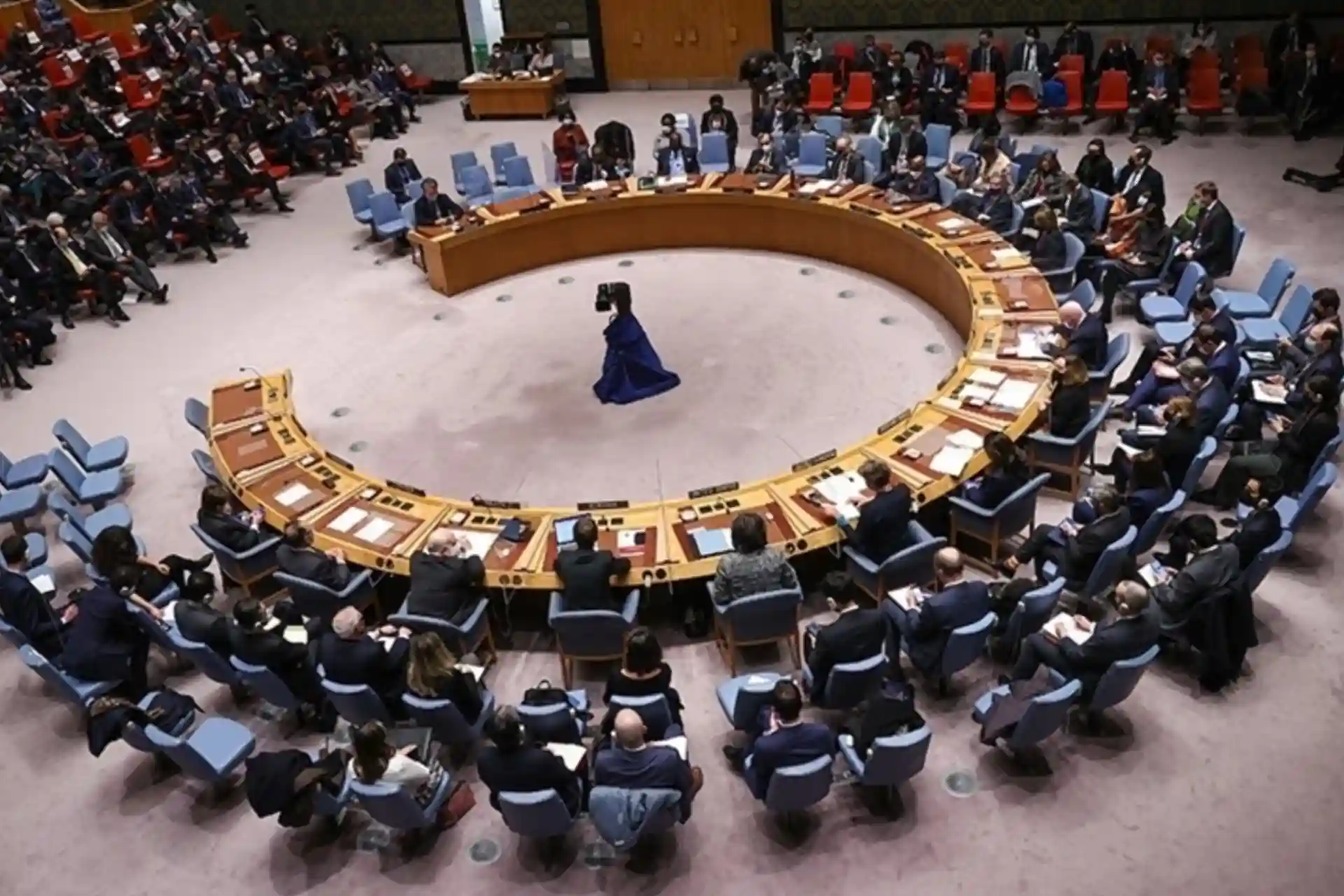13.03.2025 08:00
1008
Analysis: Will a 30-day ceasefire bring peace to Ukraine?
Ukraine has agreed to a 30-day ceasefire with Russia proposed by the United States. The decision was made after US-Ukrainian talks in Saudi Arabia. US Secretary of State Marco Rubio said he would present the proposal to Russia and that "the ball is in their court," suggesting that the decision was still in Russia's hands. But Moscow said it was too early to comment on the issue, adding that it would be necessary to study the issue more thoroughly. Ukrainian President Volodymyr Zelensky said it was up to the US to persuade Russia to accept the "positive" proposal.
The talks in Jeddah on Tuesday were the first official meeting between the two countries since an unusual confrontation between Zelensky and US President Donald Trump in the Oval Office on February 28.
What the negotiators agreed to in Jeddah is very vague. There is no information about what Kiev gave up under American pressure. One thing is known, Ukrainian and American negotiators agreed on a 30-day ceasefire on the Ukrainian-Russian front. It seems that the Kremlin is not ready for these conditions. And so it will be. Because Russia is now launching a strong offensive on the front, even almost pushing the Ukrainian armed forces out of the Kursk region, and the Russian military is making significant progress on other fronts. If Russia agrees to a ceasefire, Ukraine will be able to get its troops back on their feet within 30 days. Moreover, the US announced the resumption of arms supplies to Kiev after the Jeddah talks. The West had already deceived the Russians during the Istanbul talks before, persuading them to withdraw their troops from Kiev's doorstep, which ultimately forced the Russians to retreat within a year. At first glance, this seems like a great success for Kiev. The joint statement of the American and Ukrainian delegations speaks of a ceasefire that should last about a month and be extended after agreement with the Russian side. The statement also mentions the exchange of prisoners and civilians, and the return of Ukrainian children taken to Russia. In addition, as noted, the Ukrainian side wants Europe to join the peace process. All this is good news. Unfortunately, Russia does not want European or NATO troops to enter Ukraine after the war is over. And Moscow, in our opinion, will not agree to a temporary ceasefire.
In fact, this is the idea of Zelensky and European leaders. We say that the Copts have gone over to Russia, but at the same time we want to accuse Russia of not wanting to make peace. In this way, European figures who are in favor of continuing the war want to turn Washington back to their side. In this case, Trump will be in a dead end.
Indeed, as Trump begins talks with Putin to end the proxy war in Ukraine, European leaders are doing everything they can to sabotage his peace efforts, seize the initiative in the negotiations, and prolong the conflict. Ultimately, their calls for a “just and lasting peace” and their emphasis on Ukraine’s “territorial integrity” are nothing more than a guarantee of further military action under the guise of “peace through force.” The same failed strategy that has brought Ukraine to such a miserable state looks set to continue.
The United States has promised to continue providing intelligence and military assistance to Ukraine, but it is unclear what Kiev has given up under American pressure. Before the talks began, Rubio said that Ukraine would have to give up some of the territory it held before 2014. However, it is not entirely clear what territory he was talking about.
In 2014, Russia annexed Crimea, as well as parts of eastern Ukraine, including the Donetsk and Luhansk regions. It is believed that Ukrainian politicians may, of course, temporarily give up Crimea. There has long been talk in circles close to the Ukrainian government about the possibility of giving up part of the Donetsk and Luhansk regions. However, it is clear that the Ukrainian government will not be able to give up the remaining territories. Russia, on the other hand, wants Crimea and the four regions to be fully surrendered to its control. Without this, Russia will not negotiate. Because after the start of a large-scale special operation in Ukraine in 2022, Russia included provisions in its Constitution stating that not only Crimea, but also the entire Donetsk, Luhansk, Kherson and Zaporizhia regions are an integral part of the Russian Federation. Now Russia cannot go back. It will not return these territories to their owners. Otherwise, this will pave the way for the disintegration of Russia.
Russia currently controls 99 percent of Luhansk, 80 percent of Donetsk, and 75 percent of Kherson and Zaporizhia regions, but it wants Ukrainian troops to withdraw from the rest of these territories. If the proposal to extend the ceasefire includes giving up the parts of Ukraine that have not yet been occupied in favor of Russia, this would be a major defeat for Kiev. Because Kiev would have to give up territory that it has defended with weapons for several years at the cost of thousands of lives. But without significant territorial concessions, Russia may not agree to a ceasefire or it may not last long.
In fact, everything was said in the Istanbul talks. If Boris Johnson, who was the British Prime Minister at the time, had not ordered Kiev to break off the talks, Ukraine would not have found itself in the helpless situation it is in today. In our opinion, the process initiated by Trump will also fail due to the cunning tricks of European players such as Britain and France. That is, the fate of Istanbul awaits the Jeddah agreements as well.
There is another problem. Ukraine needs guarantees that Russia will not attack it again. However, the Americans refuse to give it such guarantees. It will only be necessary to hope for the Europeans or arm Ukraine to become as strong as Russia. Russia does not agree to this. Moscow wants a written guarantee that Ukraine will not become a member of NATO. Secondly, it wants and demands that Ukraine’s troops be limited, that it does not seek to acquire nuclear weapons in the future, that it remains a neutral state, and that the Russian language be given official status. In this regard, the results of the Jeddah talks cannot be called a fundamental turning point or a historic result. Because there is still a long way to go to achieve a lasting peace. Nevertheless, the agreement between the US and Ukraine on a temporary ceasefire in the war with Russia indicates a sharp change of direction. Meanwhile, despite Ukraine agreeing to a temporary ceasefire, there is no sign of a deal on the mineral resources that could benefit the United States in the future. Trump has made it clear and public that he is prioritizing this issue, which could become a serious obstacle in the future.
In conclusion, it can be said that Russia will not agree to a ceasefire without any conditions. Russian President Vladimir Putin will demand, for example, that Ukraine not be admitted to NATO before agreeing to a ceasefire. This is the most realistic scenario. The Kremlin has already confirmed the planned contacts with the American side in the near future. The caution in the words of Russian officials once again confirms that Moscow is preparing for heated discussions. That is, to set its own strict conditions. As we said above, the transfer of territories by Kiev, the full achievement of the goals of the special operation. If Kiev does not comply with Moscow's conditions now, the war will continue in 2025 and will continue until the Odessa and Nikolaev regions are completely occupied by Russia. Russia itself also aims to completely block Ukraine's access to the Black Sea and achieve unification with Transnistria by land through Odessa. Zelensky's stubbornness has so far played into Russia's favor, and this policy is costing Ukraine dearly.
The talks in Jeddah on Tuesday were the first official meeting between the two countries since an unusual confrontation between Zelensky and US President Donald Trump in the Oval Office on February 28.
What the negotiators agreed to in Jeddah is very vague. There is no information about what Kiev gave up under American pressure. One thing is known, Ukrainian and American negotiators agreed on a 30-day ceasefire on the Ukrainian-Russian front. It seems that the Kremlin is not ready for these conditions. And so it will be. Because Russia is now launching a strong offensive on the front, even almost pushing the Ukrainian armed forces out of the Kursk region, and the Russian military is making significant progress on other fronts. If Russia agrees to a ceasefire, Ukraine will be able to get its troops back on their feet within 30 days. Moreover, the US announced the resumption of arms supplies to Kiev after the Jeddah talks. The West had already deceived the Russians during the Istanbul talks before, persuading them to withdraw their troops from Kiev's doorstep, which ultimately forced the Russians to retreat within a year. At first glance, this seems like a great success for Kiev. The joint statement of the American and Ukrainian delegations speaks of a ceasefire that should last about a month and be extended after agreement with the Russian side. The statement also mentions the exchange of prisoners and civilians, and the return of Ukrainian children taken to Russia. In addition, as noted, the Ukrainian side wants Europe to join the peace process. All this is good news. Unfortunately, Russia does not want European or NATO troops to enter Ukraine after the war is over. And Moscow, in our opinion, will not agree to a temporary ceasefire.
In fact, this is the idea of Zelensky and European leaders. We say that the Copts have gone over to Russia, but at the same time we want to accuse Russia of not wanting to make peace. In this way, European figures who are in favor of continuing the war want to turn Washington back to their side. In this case, Trump will be in a dead end.
Indeed, as Trump begins talks with Putin to end the proxy war in Ukraine, European leaders are doing everything they can to sabotage his peace efforts, seize the initiative in the negotiations, and prolong the conflict. Ultimately, their calls for a “just and lasting peace” and their emphasis on Ukraine’s “territorial integrity” are nothing more than a guarantee of further military action under the guise of “peace through force.” The same failed strategy that has brought Ukraine to such a miserable state looks set to continue.
The United States has promised to continue providing intelligence and military assistance to Ukraine, but it is unclear what Kiev has given up under American pressure. Before the talks began, Rubio said that Ukraine would have to give up some of the territory it held before 2014. However, it is not entirely clear what territory he was talking about.
In 2014, Russia annexed Crimea, as well as parts of eastern Ukraine, including the Donetsk and Luhansk regions. It is believed that Ukrainian politicians may, of course, temporarily give up Crimea. There has long been talk in circles close to the Ukrainian government about the possibility of giving up part of the Donetsk and Luhansk regions. However, it is clear that the Ukrainian government will not be able to give up the remaining territories. Russia, on the other hand, wants Crimea and the four regions to be fully surrendered to its control. Without this, Russia will not negotiate. Because after the start of a large-scale special operation in Ukraine in 2022, Russia included provisions in its Constitution stating that not only Crimea, but also the entire Donetsk, Luhansk, Kherson and Zaporizhia regions are an integral part of the Russian Federation. Now Russia cannot go back. It will not return these territories to their owners. Otherwise, this will pave the way for the disintegration of Russia.
Russia currently controls 99 percent of Luhansk, 80 percent of Donetsk, and 75 percent of Kherson and Zaporizhia regions, but it wants Ukrainian troops to withdraw from the rest of these territories. If the proposal to extend the ceasefire includes giving up the parts of Ukraine that have not yet been occupied in favor of Russia, this would be a major defeat for Kiev. Because Kiev would have to give up territory that it has defended with weapons for several years at the cost of thousands of lives. But without significant territorial concessions, Russia may not agree to a ceasefire or it may not last long.
In fact, everything was said in the Istanbul talks. If Boris Johnson, who was the British Prime Minister at the time, had not ordered Kiev to break off the talks, Ukraine would not have found itself in the helpless situation it is in today. In our opinion, the process initiated by Trump will also fail due to the cunning tricks of European players such as Britain and France. That is, the fate of Istanbul awaits the Jeddah agreements as well.
There is another problem. Ukraine needs guarantees that Russia will not attack it again. However, the Americans refuse to give it such guarantees. It will only be necessary to hope for the Europeans or arm Ukraine to become as strong as Russia. Russia does not agree to this. Moscow wants a written guarantee that Ukraine will not become a member of NATO. Secondly, it wants and demands that Ukraine’s troops be limited, that it does not seek to acquire nuclear weapons in the future, that it remains a neutral state, and that the Russian language be given official status. In this regard, the results of the Jeddah talks cannot be called a fundamental turning point or a historic result. Because there is still a long way to go to achieve a lasting peace. Nevertheless, the agreement between the US and Ukraine on a temporary ceasefire in the war with Russia indicates a sharp change of direction. Meanwhile, despite Ukraine agreeing to a temporary ceasefire, there is no sign of a deal on the mineral resources that could benefit the United States in the future. Trump has made it clear and public that he is prioritizing this issue, which could become a serious obstacle in the future.
In conclusion, it can be said that Russia will not agree to a ceasefire without any conditions. Russian President Vladimir Putin will demand, for example, that Ukraine not be admitted to NATO before agreeing to a ceasefire. This is the most realistic scenario. The Kremlin has already confirmed the planned contacts with the American side in the near future. The caution in the words of Russian officials once again confirms that Moscow is preparing for heated discussions. That is, to set its own strict conditions. As we said above, the transfer of territories by Kiev, the full achievement of the goals of the special operation. If Kiev does not comply with Moscow's conditions now, the war will continue in 2025 and will continue until the Odessa and Nikolaev regions are completely occupied by Russia. Russia itself also aims to completely block Ukraine's access to the Black Sea and achieve unification with Transnistria by land through Odessa. Zelensky's stubbornness has so far played into Russia's favor, and this policy is costing Ukraine dearly.



